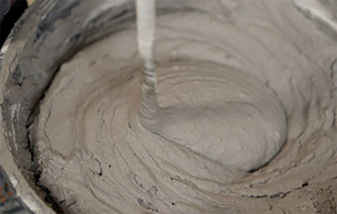
Oct . 08, 2024 22:41 Back to list
Understanding the Role of Bonding Agents in Construction and Industrial Applications
Understanding Latex Bonding Agents A Comprehensive Overview
Latex bonding agents have gained widespread popularity in various industries due to their versatility and effectiveness in enhancing adhesion between materials. These agents, primarily composed of synthetic or natural latex, are essential in applications ranging from construction to crafts. The unique properties of latex bonding agents make them suitable for different substrates, including wood, concrete, and fabrics.
One of the most significant advantages of latex bonding agents is their ability to create strong bonds while offering flexibility. Unlike traditional adhesives that may become brittle over time, latex-based adhesives retain their elasticity. This characteristic is particularly important in applications where materials may expand or contract due to temperature changes or other environmental factors. As a result, latex bonding agents not only ensure a secure attachment but also allow for movement without compromising the integrity of the bond.
In the construction industry, latex bonding agents are often used in conjunction with cement and other materials to improve adhesion and durability. For example, when added to mortar or concrete mixes, latex can enhance the tensile strength of the mixture, making it more resistant to cracking and wear. This is particularly beneficial in high-stress areas or in applications where moisture is a concern. The flexibility inherent in latex agents helps to absorb stresses that would otherwise lead to failures in more rigid materials.
latex bonding agent

Another advantage of latex bonding agents is their relatively easy application process. They can be applied using standard tools such as brushes, rollers, or spray equipment, making them accessible for both professionals and DIYers. Latex bonding agents generally dry clear, which is an added benefit for applications where aesthetics matter. Additionally, many of these agents are water-based, making them easier to clean up than solvent-based alternatives. This characteristic not only benefits the environment but also enhances safety during the application process.
In the realm of crafts and hobbies, latex bonding agents are invaluable. Artists and crafters often utilize these adhesives for various projects, including scrapbooking, patchwork, and home décor. The ability to adhere different materials—such as fabrics, paper, and wood—makes latex bonding agents a go-to option for creating unique and durable craft items. Their resilience ensures that finished projects withstand the test of time.
However, despite the numerous benefits, it is important to consider the limitations of latex bonding agents. For instance, they may not be suitable for applications exposed to extreme temperatures or harsh chemicals. It is crucial to evaluate the specific requirements of any application to determine whether a latex bonding agent is the appropriate choice.
In conclusion, latex bonding agents are a versatile and effective solution for a wide range of applications, from construction to craft projects. Their flexibility, ease of use, and ability to create strong, durable bonds make them indispensable in many fields. As innovations in adhesive technologies continue to evolve, latex bonding agents are likely to remain a popular choice, catering to the needs of both professionals and hobbyists alike. Whether you are building a home, completing a renovation project, or diving into a creative endeavor, understanding the properties and uses of latex bonding agents can significantly enhance the quality and longevity of your work.
-
The Widespread Application of Redispersible Powder in Construction and Building Materials
NewsMay.16,2025
-
The Widespread Application of Hpmc in the Detergent Industry
NewsMay.16,2025
-
The Main Applications of Hydroxyethyl Cellulose in Paints and Coatings
NewsMay.16,2025
-
Mortar Bonding Agent: the Key to Enhancing the Adhesion Between New and Old Mortar Layers and Between Mortar and Different Substrates
NewsMay.16,2025
-
HPMC: Application as a thickener and excipient
NewsMay.16,2025
-
Hec Cellulose Cellulose: Multi functional dispersants and high-efficiency thickeners
NewsMay.16,2025







